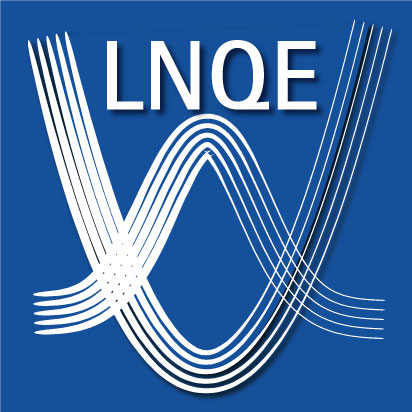Ort: Hörsaal im LfI (Schneiderberg 32, Hannover, Deutschland)
Zeit: Mittwoch, den 27.01.2010 um 17:30 - 18:30 + anschließendes Beisammensein
Nanostructures can potentially enhance the photovoltaic effect significantly beyond of what is achieved today. Most solar cells fabricated today are large-area diodes made of Si wafers. Their energy conversion efficiency is limited to about 28%, the so-called Shockely-Queisser limit. This limit can be surpassed, for example by combining various semiconductors with different band gaps, where efficiencies exceeding 40% have been experimentally demonstrated. The ultimate efficiency limit is obtained by considering solar cells as a Carnot engine: it is about 85%.
However, when thinking about which nanostructures can improve solar cells, it is important to bear in mind that efficiency is not the only aspect to energy conversion: coal-fired power plants have rarely an efficiency exceeding 30% and are successful. Hence, this presentation discusses also other aspects than efficiency. For example, are there features in quantum-dots (e.g. fabricated on large area by self-organisational means) that are inherently better suited than wafers to produce solar power? Can photon-management systems (by means of photonic crystals, plasmonic excitations in nanosized metal particles, two-photon processes, etc.) be successfully combined with industrially fabricated cells? Or do nanostructures require cell concepts that are far from present-day applications, such as ultra-thin films deposited on photonic crystals?
The presenter is Dr. Pietro P. Altermatt from the Dep. of Solar Energy Research at the Institute for Solid-State Physics at LUH. With device modeling, he contributed to the world record efficiency of Si solar cells while working for ten years in the group of Martin A. Green in Sydney, Australia, and has focused on the simulation of optical properties of nanostructures while being at LUH for the last four years.







![[Translate to English:] Logo Zusammenland farbig](/fileadmin/_processed_/a/9/csm_zusammenland_4c_e78505eb7d.png)
![[Translate to English:] Logo Zusammenland-schwarzweiß](/fileadmin/_processed_/1/2/csm_zusammenland_sw_f06954e75c.png)